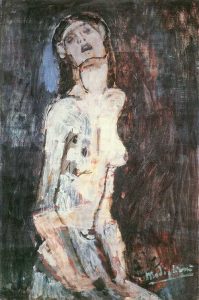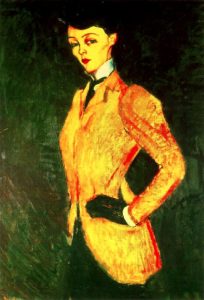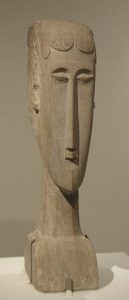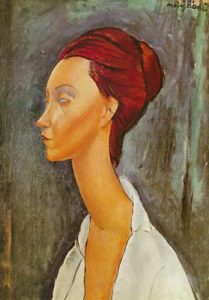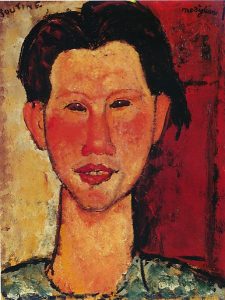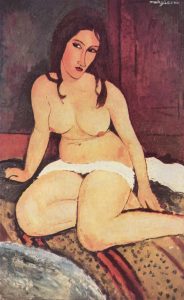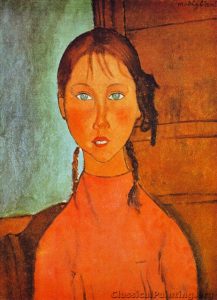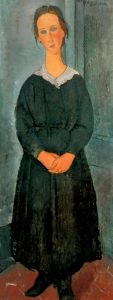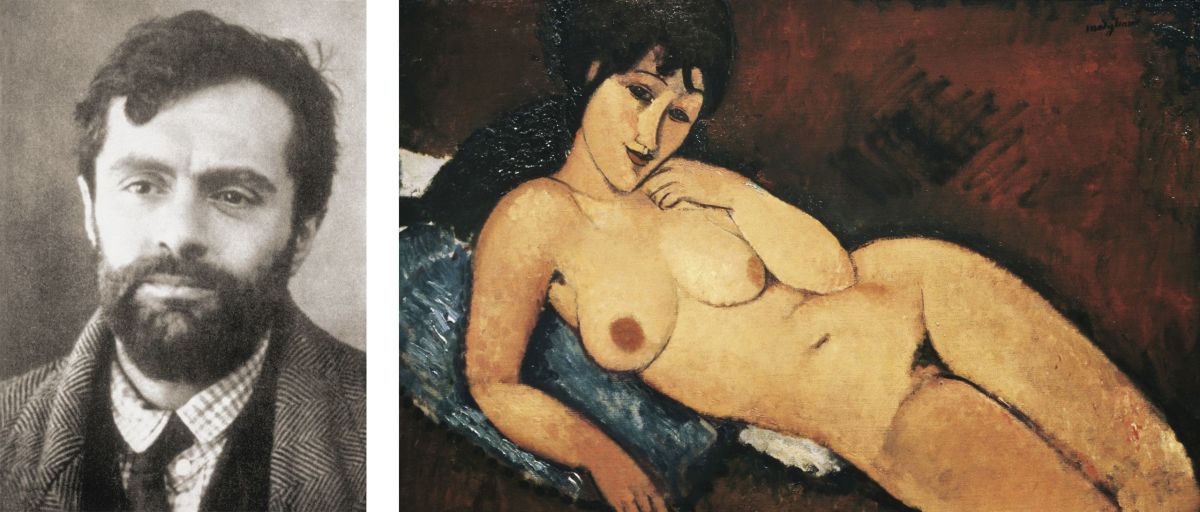In the last post I made reference to Lautréamont. Little is known about this very outstanding writer and intellect, he lived and died early, in obscurity, and rose to fame post mortem. To a lesser extend this also accounts for Amadeo Modigliani, who happens to be one of my favorite painters. What is known about him is at least that he was very well read and that he always carried a copy of Lautréamonts Maldoror with him. – Modi was well known among the Paris art scene, but remained an idiosyncratic outsider even there and it seems somehow uncanny how Modi could have found the strengh to avoid the influence of Picasso (and others); of Picasso and his multidimensional, intellectual paintings, whereas he himself made portraits seemingly flat and two-dimensional (which was a reason he was dismissed by critics like Carl Einstein). But if you look at his paintings they show a good deal of love and of empathy for his models, a truly productive mimesis, a gentle soul; in his portraits there is this massive interplay between their seemingly reduced appearence and the individuality and character of his models being so pronounced — which is why – in some contrast to Picasso – Modigliani makes my heart sing. – He lived in poverty and died due to tuberculosis at age 35. (Last year his Nu Couché was sold for $ 170 million and is therefore at the moment the second most expensive painting in the world (#1 is Picasso´s Les Femmes d´Alger)). Although the couple had a baby his finacee Jeanne commited suicide the following day. This is understandable, since, as far as I can see, once you have met someone like Modigliani in your life you are not likely to ever meet such a person again.
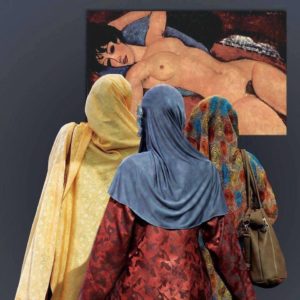
UPDATE 03/20/2017 I have mentioned the last time that it is cool, if not somewhat uncanny how Modi avoided the pronounced influence of Picasso respectively of the avant-gardist tendencies of his time. A considerably robust and strong artistic personality, self-contained and authentically creative out of itself, is necessary to operate at such a level of stability and unaffectedness. Modi however did not explicitely desire to be avant-garde, and he was content with being an outsider, occupying the position of true individualism – and indeed, he was aware that he was a kind of „superuomo“, an overman as the climax of the authentically creative individual drawing out of itself to the highest degree; – Modi´s quest was for beauty, for harmony, for vitality and for the eternal. Whereas the primary motive of avant-gardism is to explode into the future, the serene qualities of beauty, harmony, etc. refer to the archetypical. The art genius, both revolutionary as conservative as he is, will strive to express beauty and harmony by relying on archetypical forms and transforming them into something new, to create new archetypes; plus he will be highly creative in discovering the archetypical in places neglected by others: Modi was a versatile and dead-aimed artist from the beginning, painting, for instance, the eerie as well as roughcast Nudo Dolente (1908) or displaying his sense for elegant forms and colours as well as his talent (or genius) for offering striking and revealing impressions of physiognomy and character with Woman in Yellow Jacket (Amazon) (1909) (which infuriated the amazone – Baroness de Hasse de Villers – so much that she refused to pay for it) – yet it was during his period as a sculptor (1909-1913) in which Modi progressed into synthesis. In his quest for „forms of beauty and harmony“ Modi draw back not only on sculptural forms of the Greco-Roman antiquity but also of ancient non-European worlds. Despite that his sculptures are rather a paraphrase and an allusion to primitivism, not an imitation nor a mere avant-gardist takeover, revealing, again, his staunch autonomy as well as accuracy in finding modes of expression of both abstract and eternal as well as concrete and individual qualities.
Through reduction, linearity and abstraction Modi found his own, peculiar and homogenous style, and maybe the true amazing quality of Modigliani´s art is how the abstract and the supratemporal and the concrete, the individual and the modern not only mirror each other but seem to be born out of each other. In taking away so much elements that his portraits may rather seem caricatures he brings the physiognomy to a vibrant life and to extremely distinct expression; despite the homogeneity in style the individuality is always most pronounced. His nudes are both individually (and in several respects) in the flesh as well as they are statuarily abstracted and otherwordly – where this amalgam between living objects and objects of art, the animate and the (timeless) inanimate and transcendent comes in the most unexpected, idiosyncratic way. Likewise his characters sometimes have eyes whereas on other occasions their eyes are eradicated into an apparent de-individualised glimmer (– Modigliani explained that to him this would symbolise an „affirmation of life“, on other occasions that he would not paint eyes as long as he was not sure about having captured to „soul“ of a person —— that Modigliani did not talk much about his art, offered several, sometimes seemingly contradictory and elliptic explanations is typical for the genius, since the genius makes conclusions all the time yet at the same time lives in a multilayered world of inconclusive conclusions in which everything is both in stasis and in motion). In his final portraits his characters are transcended into a kind of supra-individuality where the abstract and the concrete meet, the timeless and the ephemeral, the common and the idiosyncracy… where those portrayed have become dwellers in a realm that is impossible to tell what it actually is (Heaven? Hell? Purgatory? Or, most likely glimpses from an eye on reality which is able to look into other, additional dimenions)… where those individuals portrayed have become… art (where Modi´s artistic eye somehow seemed to have sensed a compressing interplay of dimensions forming diamonds).
Although Modigliani wasn´t a commercial success during his brief lifetime his art was well acknowledged by the people close to him, although no one could tell where the specific quality and beauty lay and how it could be conceptually grasped. This kind of evasiveness (due to its multidimensionality respectively its interdimensionality) is still there and makes the quality of genius art. That is so because it is, finally, inexblicable as beauty itself and carries its own transcendence.
I do not know or understand why and how Carl Einstein could have got it so wrong with Modigliani; yet despite their high intelligence neither The Art of the 20th Century nor Bebuquin, I find, carry much of a soul. It is cool how Einstein is a severe judge of the art and the artists of his time – such a thing is quite absent today – but I often find The Art of the 20th Century unnecessarily confrontational.

